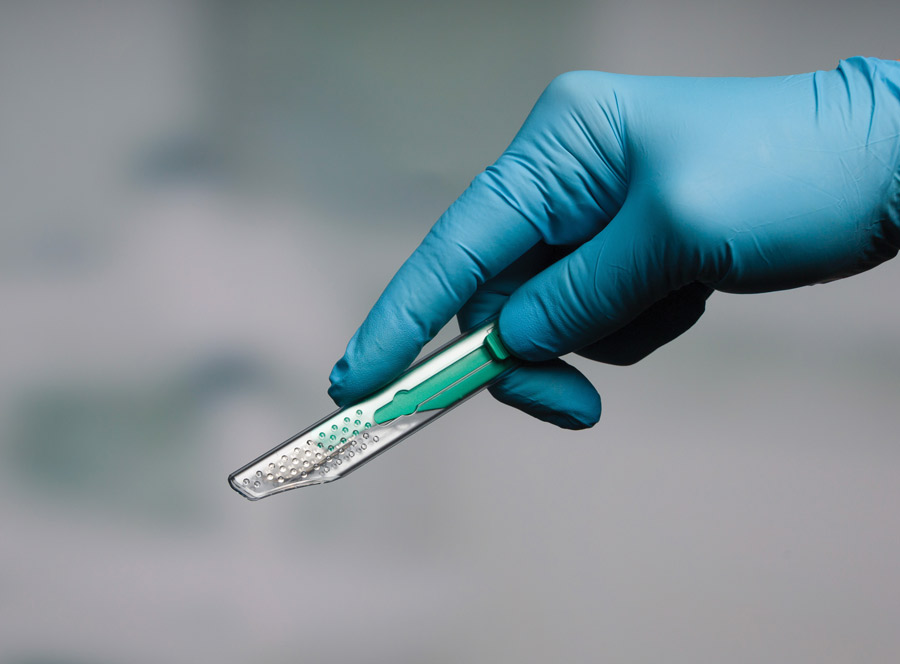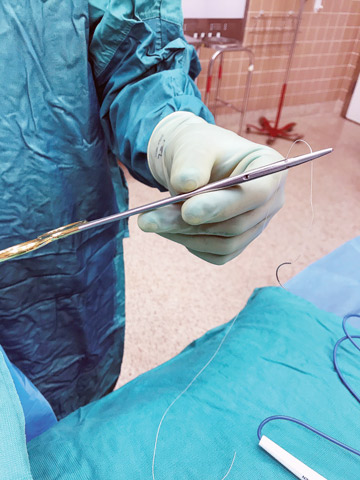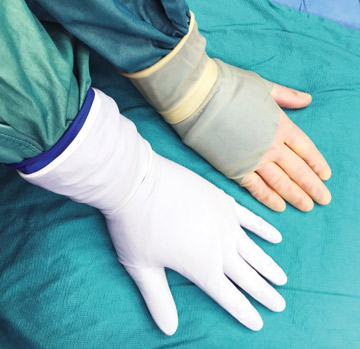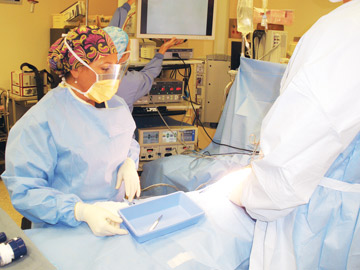Daniel Gomez, MD, FACOG, FACS, vividly remembers the day during his third year of residency when he was operating with one of his attending physicians. As they were sewing up the uterus during a C-section, the attending inadvertently stabbed him
in the index finger with a suture needle. “You always try to be as careful as possible, but you rely on the person who you’re operating with to use good technique and shield the needle,” says Dr. Gomez, who is now a board-certified
obstetrician/gynecologist at Holy Cross Medical Group in Fort Lauderdale, Fla.
Unfortunately, Dr. Gomez’s experience is the norm rather than the exception. In fact, he says the vast majority of surgical residents — upwards
of 90% — sustain needlestick injuries during their training.
He followed proper protocols after the injury occurred — removing his gloves, washing his hands and putting clean gloves on — and then reported the injury to employee health so he could get tested for HIV, syphilis and hepatitis. He also informed the patient of what had happened and received her consent to do a baseline blood test. Luckily, all tests came back negative, and Dr. Gomez wasn’t left with any permanent damage.
Dr. Gomez recalls being asked to complete online training that focused on needle safety. “I thought that was interesting, because I felt like [the facility] was telling me this injury could have been prevented.”
The refresher course was an institutional-level protocol, requiring anyone who sustained a needlestick injury to complete the training and show documentation that they were accomplished in proper handling techniques. Dr. Gomez thought the modules were informative, but they were too little too late to do much good in his case. “My biggest motivator for preventing a needlestick injury is having already suffered one,” he says.
The handling and disposal of sharps in the OR are high-risk tasks that endanger surgical team members on a daily basis, but many facilities still do not have viable action plans in place to prevent injuries from happening or responding properly when they do occur. While gains have been made, sharps injuries remain all too common. Unlike Dr. Gomez, your providers shouldn’t have to be motivated by past exposures to remain vigilant about protecting themselves from harm.
.svg?sfvrsn=be606e78_3)




.svg?sfvrsn=56b2f850_5)